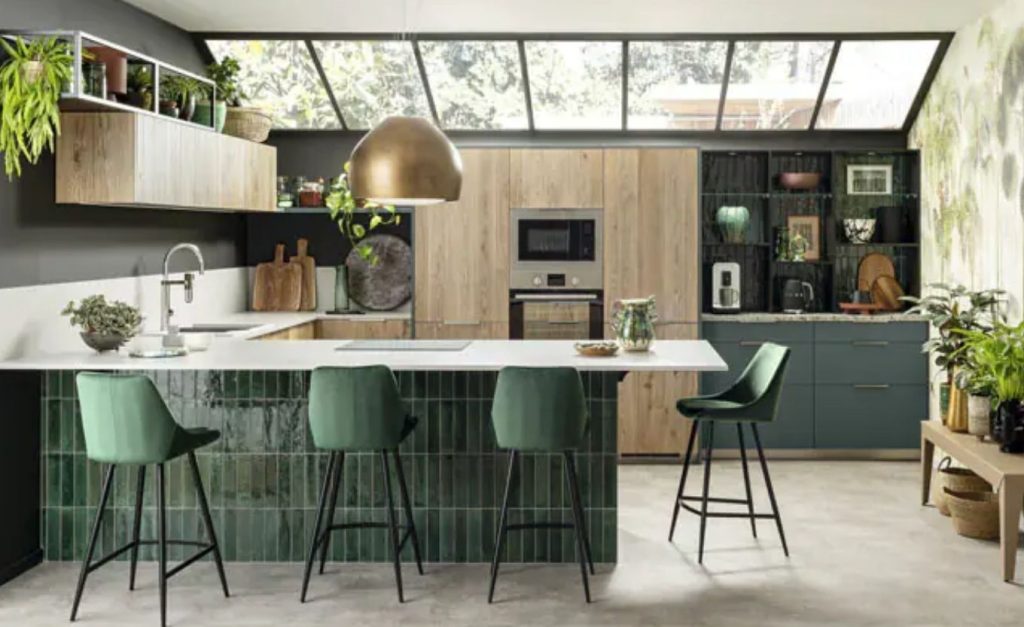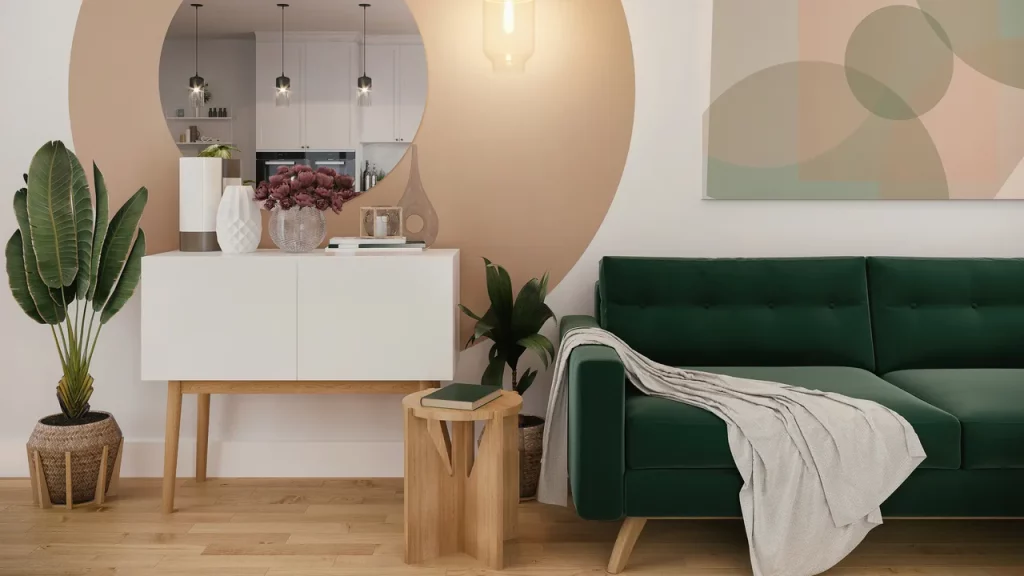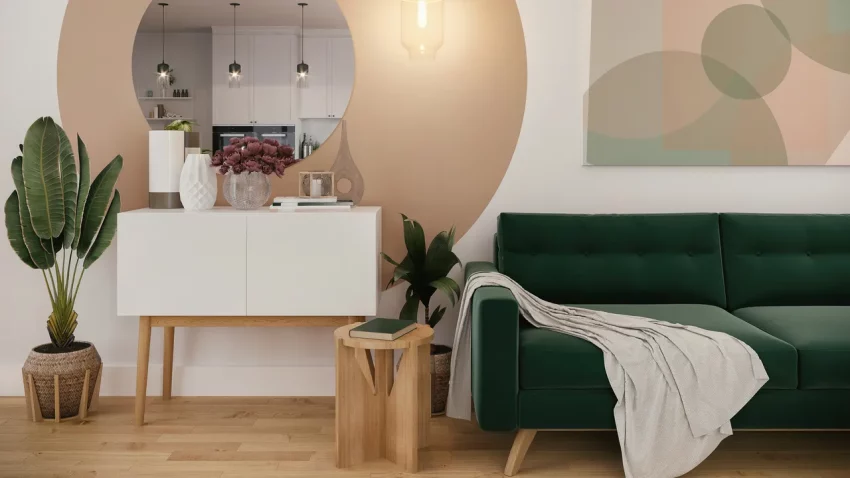
In her book “Color: A History of the Chromatic Palette” (Capitán Swing, 2023), journalist Victoria Finlay delves into the enigmatic world of mi se green, a color highly prized by the emperors of China and, for centuries, one of the country’s best-kept secrets. According to Finlay, the discovery in the 1980s of an inventory of hidden objects dating back to 874 AD, which included a set of ceramic objects in this unique color, marked one of the greatest archaeological finds of the past century in China, second only to the terracotta warriors. However, the central mystery that Finlay tackles in her book is not so much the hidden location of these objects but rather understanding why this subdued, somewhat dull shade of green held such immense value for the most powerful and luxurious individuals in the empire.
Far from the opulence of emerald green, the luster of jade green, or the more turquoise-toned shades, we witness an aesthetic phenomenon where hues of green akin to mi se have now taken over the interiors of modern homes. At least, that’s what we see in the headlines of decoration magazines and on social media profiles that showcase the latest interior design trends.
The Rise of Sage Green in Modern Interior Design

There are numerous examples. In Palo Alto, California, interior designer Raili Clasen has opted to contrast the wooden texture of a bright home with a subdued and tranquil green that dominates the kitchen and bathroom. Meanwhile, the San Francisco-based interior design studio Modtage infuses a bathroom in San Anselmo, California, with a retro spirit thanks to green tiles that coexist with dark wooden shelves, contrasting with deliberate white grout lines. The kitchen in Brooklyn designed by the Brownstone Boys also features green accents, along with white details and dark wood, creating a harmonious blend. Across the pond in Europe, the Polish studio Finch Studio immerses a kitchen and living space in Krakow in the aesthetic vibe of the 1970s, with walls adorned in green tiles reminiscent of sage, a Flowerpot ceiling lamp, and an iconic Togo sofa in muted blue.
According to the annual interior design trends report published by the Apartment Therapy platform, sage green, a hue that merges with grayish undertones, was poised to become one of the colors of 2023, alongside terracotta pink and a maroon leaning towards purple. However, it’s common, when surveying interior design trends through the profiles of various architecture and interior design studios and specialized press, to encounter more intense versions of this matte green. In a bedroom set designed by Emily Wassal for the Joybird store, the creative director uses the green color of the walls to interpret the space through furniture. She describes this shade of green as Basque green, which is reminiscent of the color of oak leaves, a species to which the Gernika tree belongs, a symbol of freedom in the autonomous community and a color also present in the Ikurriña flag.
It’s not just by chance that these shades of green are linked to plants or trees, whether it’s sage, olive, or oak. This trend often comes with a reinterpretation of the interior design aesthetics that flourished in the 1970s, which are now more relevant than ever. In fact, the reasons for the return of straight lines and textures from those years go hand in hand with those that crown this palette of calm greens as the backdrop for homes in 2023.
In the 1970s, the walls of the most modern and privileged homes were adorned with wooden slats. Plants, in their most wild expression, infiltrated indoor spaces, green became part of the palette, and windows opened to wooded landscapes. This trend also signaled a response to the overdose of color from the hippie aesthetics, flower power, and psychedelia of the previous years. It marked the beginning of a calculated measure of aesthetic sobriety that would be highly influential in the decades to come, returning cyclically as a safe haven in times of crisis. Perhaps the year in which temperatures reach their highest ever recorded and fires ravage the planet’s green lungs constitutes one of these crisis states that also emerges in the aesthetic dimension of objects, design, and spaces. The climate emergency could be transforming the dark green of tree canopies into a coveted luxury item.
Writer and journalist Lucy Jones writes in her essay “Losing Eden” (Gatopardo, 2021) that, as a general rule, people belonging to lower socioeconomic groups or racial and ethnic minorities tend to have less access to parks than white, affluent people. “Evidence suggests that vulnerable populations spend less time in natural areas, with fewer parks in disadvantaged areas compared to prosperous ones. Children living in disadvantaged areas are nine times less likely to have access to nature through green areas and play spaces than children in wealthy areas, who may also have private gardens,” she explains. The longing for contact with nature, or simply the possibility of accessing it, could thus have transformed into a palpable and pulsating human need, detectable, like so many others, in the landscape of trends. A color becomes, therefore, a bitter substitute for that longed-for contact.
After all, this was the conclusion that Finlay reached in her research during her visit to Famen, China. The secret of this highly prized mi se green, which was initially disappointing to her due to its dull and subdued appearance, lay in its ability to evoke the one thing that transcends the confines of a palace: the greens that color wooded landscapes. Perhaps, as the journalist writes in her marvelous essay, within the disconnection from the ecosystems to which humans belong, something similar occurs: “Wouldn’t you yearn for something earthly and true?”
Conclusion: The Evergreen Appeal of Sage Green
In conclusion, the resurgence of sage green in modern interior design speaks to a deeper longing for connection with nature and a desire for tranquility and authenticity in our living spaces. Despite its humble origins and subdued appearance, sage green has emerged as a symbol of balance, harmony, and a return to simplicity in a world increasingly dominated by technology and urbanization.
As we navigate the challenges of environmental degradation and climate change, the appeal of sage green represents not just a trend in interior design but a reflection of our collective yearning for a more sustainable and grounded way of living. Whether evoking the lush foliage of forests or the tranquility of open meadows, sage green reminds us of the beauty and resilience of the natural world and our profound connection to it.
In the coming years, we can expect to see sage green continue to play a prominent role in interior design, as designers and homeowners alike embrace its timeless appeal and its ability to create spaces that inspire serenity, rejuvenation, and a deep sense of connection to the world around us. As we strive to build more sustainable and environmentally conscious societies, sage green stands as a symbol of hope and renewal, reminding us of the enduring power of nature to inspire and uplift us in our daily lives.
So, whether you’re considering a subtle accent wall or a complete room makeover, consider incorporating sage green into your home to
bring a touch of natural beauty and tranquility into your life. After all, in a world that often feels chaotic and uncertain, sage green offers a welcome respite, inviting us to slow down, reconnect with the earth, and find peace in the simple joys of nature.
With its timeless elegance and understated charm, sage green is more than just a color—it’s a statement of our shared humanity and our enduring connection to the natural world. And in a world that can often feel divided and disconnected, sage green serves as a reminder of the simple yet profound truth that we are all part of something greater than ourselves, bound together by our love for the planet we call home.

